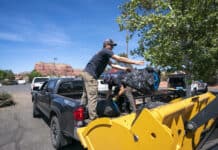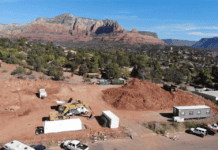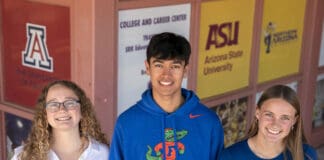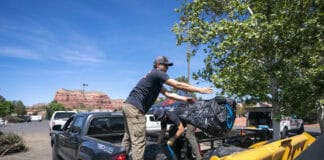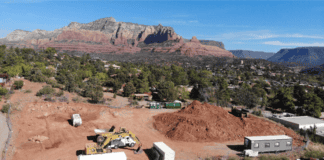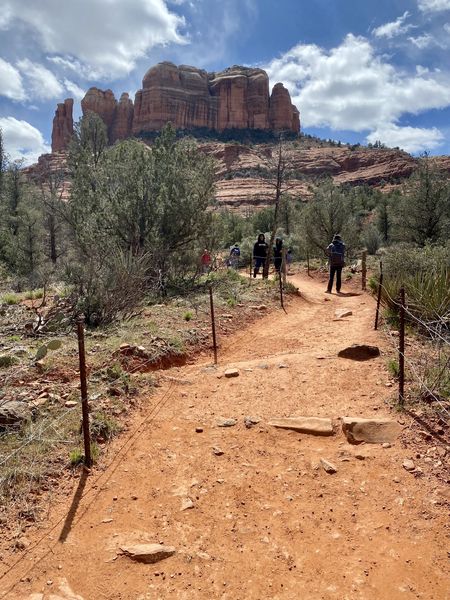
The Great American Outdoors Act is providing $878,000 in funding for trail maintenance and upgrades for three projects in the Coconino National Forest around Sedona in addition to $380,000 for a signage project in nearby Loy Canyon.
The 2020 passage of the Great American Outdoors Act created the Legacy Restoration Fund, which will receive an annual allocation of $1.9 billion through fiscal year 2025. The LRF is the funding source for the Sedona projects as well as for other deferred maintenance work being carried out by federal land management agencies. Its revenue comes from fees charged for energy development of fossil fuels and renewable sources on public lands.
The first $98,000 project was completed in March with assistance from American Conservation Experience following work by the Conservation Legacy’s Ancestral Lands Crew in November 2021. Work focused on the west side of the Village of Oak Creek south of Crescent Moon Ranch toward Cathedral Rock. Additional work was completed on the Easy Breezy and Templeton trails.
The primary use of the funding will be the $700,000 Red Rock Trail Heavy Deferred Maintenance Project, a funding request to pay Forest Service trail crews to do maintenance across the entire Red Rock zone of the district.
Forest Service recreation management specialist Kevin Kuhl explained that it would involve “installation and construction of rock check steps, armoring of trail tread with rock, social trail closure work and installation of additional signage aids to encourage users to stay on the designated trails. This facilitates safer access to trails in many areas. The additional signage helps to better mark the system routes in slick rock zones to prevent lost or disoriented hikers.”
“Fencing and trail delineating features have been installed in high-use corridors and along steep trail alignments to better aid with social trail closure work and [recovery] of native vegetation,” Kuhl added. “This will help to limit further damage to cryptobiotic soils and also to allow existing soils to recover over time.”
Cryptobiotic soils are conglomerations of algae, cyanobacteria and fungi that appear as mounds of black material on the landscape, and are often known as “crusts.”
“Crusts play a vital role in desert health,” the Coconino National Forest wrote in a Facebook post. “Cyanobacteria in the desert form filaments surrounded by sheaths. With summer or winter rains, these filaments become moist and active, moving through the soils, leaving behind a trail of the sticky sheath material. The sheaths stick to surfaces such as soil particles, forming an intricate webbing of fibers. In this way, loose soil particles are joined together, and otherwise unstable, highly erosion-prone surfaces become resistant to both wind and water erosion … Basically, they hold the Coconino National Forest in place.”
Kuhl noted that another benefit of the restrictions is keeping hikers on the trail and decreasing erosion, which in turn keeps sediment in the ground and not in the watershed.
Still in the design phase is the $80,000 Red Rock Trails Universal Access Enhancement Project at the Western Gateway trailhead adjoining the Sedona Cultural Park. The district anticipates completing construction of a new accessible trailhead and maintenance work by September of 2025.
In addition to the Outdoors Act projects, the Coconino National Forest is also developing a proposal for the Red Rock trail enhancement project that would involve “up to 30 miles of non-motorized trail construction, adoption of 16 miles of user-created trails and naturalization of 21 miles of user-created trails in … Sedona; Village of Oak Creek and Cornville.”
“The Red Rock Ranger District hosts roughly 40 trails-oriented volunteer events open to the public and with Friends of the Forest during the winter trails season,” Kuhl said. “These are great opportunities to give back to public lands and learn how our professional trail crews manage trails in our unique ecosystem. Event information is posted though our partners and on the Coconino National Forest Facebook page.”



